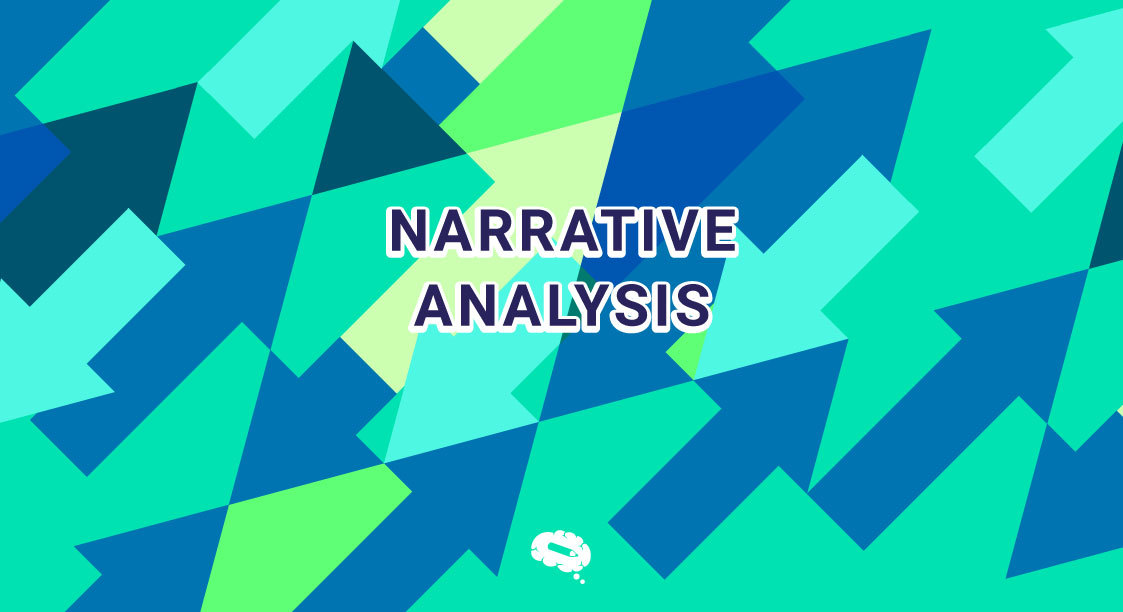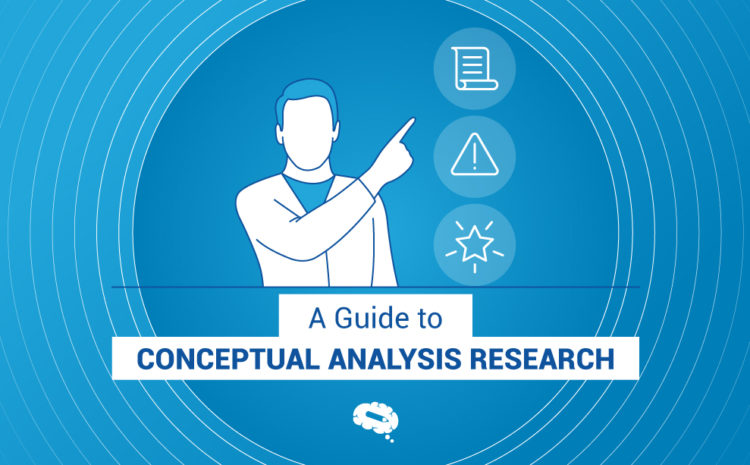Since the beginning of time, stories have played a significant role in human civilization. Narratives have the uncanny potential to captivate our brains, touch our hearts, and change our perception of the world, whether they are found in classical myths, fables, or contemporary novels and films. What, though, lies underlying these enthralling stories? How do we decipher the complexities and layers of meaning buried within stories?
In narrative analysis, the core of storytelling is analyzed, decoded, and made clear. Narrative analysis enables the investigation of the underlying themes, patterns, and societal implications embedded into a narrative structure.
This comprehensive guide seeks to provide the knowledge and skills required to accurately evaluate and comprehend narratives.
What is Narrative Analysis?
Narrative analysis is a multidisciplinary approach that aims to comprehend and interpret the structure, content, and meaning of narratives. It entails analyzing a range of storytelling approaches, including those found in literature, oral traditions, movies, personal narratives, and more. Narrative analysis examines stories in order to identify the underlying themes, patterns, and societal consequences that are there.
At its core, narrative analysis acknowledges that stories are powerful instruments of communication, expression, and cultural transmission rather than only being entertaining or fictional creations. Researchers and academics are interested in learning more about how stories affect social dynamics, alter our perception of the world, and reflect both individual and group experiences.
Types of Narratives
There are many different types of narratives, each with its own qualities and purposes. Here are some examples of common narrative formats:
Literary Narratives
- Fictional works like novels, short stories, poetry, and plays.
- Intricate narratives, well-rounded characters, and thematic explorations.
- Intended to entertain, challenge thinking, and evoke emotions.
Oral Narratives
- Passed down orally through generations.
- Includes oral history, folktales, myths, and legends.
- Preserves cultural heritage, imparts moral lessons, and creates collective identities.
Personal Narratives
- Accounts of unique experiences, memories, and reflections.
- Written as personal essays, autobiographies, memoirs, or diaries.
- Provides insights into individuals’ perspectives, emotions, and personal development.
Historical Narratives
- Describes individuals, events, and historical changes.
- Relies on historical records, eyewitness accounts, and research.
- Presents factual narratives of historical events and shapes our understanding of history.
Media Narratives
- Found in mass media such as movies, TV shows, documentaries, and reports.
- Utilizes visual and audio elements to tell stories and convey information.
- Entertains, educates, and influences public opinion.
Digital Narratives
- Emerged with the development of digital technologies.
- Includes social media narratives, virtual reality experiences, interactive video game narratives, and online storytelling.
Institutional Narratives
- Created by institutions like businesses, governments, and religious groups.
- Shape public perception of the institution, its principles, and its objectives.
- Strategically produced to influence public opinion and maintain institutional legitimacy.
Mythic Narratives
- Found in religious and cultural traditions.
- Explain the origins of the world, natural events, and human practices.
- Often contain supernatural or divine elements.
The Objective of Narrative Analysis
The objective of narrative analysis is to provide a comprehensive and in-depth understanding of narratives by examining their underlying structures, themes, and social implications. Through a meticulous and systematic examination of the text, the narrative analysis aims to unravel the complexities and intricacies of storytelling.
It aims to investigate how narratives affect our understanding of the world, our perceptions of it, and how they represent individual as well as collective experiences. Researchers can discover the deeper meaning and cultural value buried inside narratives by scrutinizing narrative techniques, character development, plot structures, and symbolic elements.
The narrative analysis also aims to shed light on the power dynamics, social representations, and ideological underpinnings present in narratives, allowing for a critical examination of the messages and values conveyed. In the end, narrative analysis seeks to offer insightful understandings into the changing impact of stories and their role in forming our identities, beliefs, and societal dynamics.
Content Analysis X Narrative Analysis
Content analysis and narrative analysis are two distinct approaches used in research to analyze texts, including narratives.
The content analysis focuses on objectively examining the manifest content of a text, categorizing and quantifying specific elements or themes. It is often used to study large datasets and identify patterns or trends.
Narrative analysis, on the other hand, aims to qualitatively interpret and understand narratives by exploring their deeper meaning, structure, and subjective experiences. It involves close reading, interpretation, and engagement with the nuances of the narrative.
While content analysis emphasizes objectivity and generalizability, narrative analysis delves into the subjective and interpretive aspects of storytelling.
Narrative Analysis X Case Study in Qualitative Research
In qualitative research, case study and narrative analysis are related approaches.
Case studies examine carefully at particular phenomena, whereas narrative analysis focuses on analyzing stories to understand experiences and societal ramifications.
When used in tandem, case study, and narrative analysis create a potent symbiotic relationship in qualitative research. While a case study offers a thorough investigation of a specific event within its context, narrative analysis deepens the understanding by focusing on the different narratives and experiences included within the particular case.
By integrating these approaches, researchers can paint a more comprehensive and insightful picture.
Narrative Analysis X Thematic Analysis
Narrative analysis delves into individual stories and narratives, uncovering subjective experiences and social implications. Thematic analysis, on the other hand, identifies and analyzes common themes across multiple narratives.
When used together, these approaches provide a comprehensive understanding of both the individual stories and the broader patterns within a dataset.
Capturing Narrative Data
Capturing narrative data is a nuanced and multifaceted process that goes beyond simply collecting stories. It entails developing a space in which individuals can openly express their perspectives, emotions, and experiences in a narrative approach.
Researchers can dive into the rich tapestry of human narratives by using techniques including focus groups, focus interviews, written narratives, ethnographic observations, archival research, or digital storytelling
Transcribing Narrative Data
Transcribing narrative data is a vital and intricate process that bridges spoken narratives to written form, facilitating in-depth analysis and interpretation. Here are some key considerations when transcribing narrative data:
- Accuracy is paramount, capturing the essence of the original narrative by faithfully transcribing spoken words, expressions, and non-verbal cues.
- Clarity and readability enhance comprehension, employing appropriate formatting and labeling.
- Time stamps and annotations aid in referencing specific sections, facilitating efficient analysis.
- Transcription software or services can be employed to streamline the process.
- Ethical considerations ensure the removal of identifying information, protecting participant confidentiality.
Overall, the transcription of narrative data empowers researchers to unravel the nuances, meanings, and insights embedded within the narratives, enriching qualitative analysis.
Coding in Narrative Analysis
Coding in narrative analysis involves the process of categorizing and organizing data to identify patterns, themes, and meaningful units within the narratives. It is a crucial step that allows researchers to systematically analyze and interpret the content of the narratives.
Inductive Method for Narrative Analysis
The inductive method for narrative analysis involves deriving themes and patterns directly from the data without preconceived categories or theories. Researchers immerse themselves in the narratives, engage in line-by-line coding to identify initial patterns, and develop codes and categories based on emerging themes.
Deductive Method for Narrative Analysis
The deductive method for narrative analysis involves applying pre-existing theories or frameworks to analyze narratives. Researchers start with established categories or codes derived from theory and apply them to the data.
The aim is to validate or explore theoretical concepts within the narratives.
Hybrid Inductive and Deductive Narrative Analysis
Hybrid inductive and deductive narrative analysis is an approach that combines the exploratory nature of inductive analysis with the structure provided by deductive frameworks.
Researchers engage in an iterative process, starting with familiarization of the narratives, followed by inductive coding to identify emerging themes, and deductive coding to apply pre-existing concepts or theories.
Step-by-Step Approach to Narrative Analysis and Finding Core Narratives
Step 1: Code Narrative Blocks
Identify and code narrative blocks within the dataset, which represent significant passages or sections of storytelling.
Step 2: Group and Read by Live Event
Group the narrative blocks based on the live events or situations they are associated with, and read them within the context of those events.
Step 3: Create Nested Story Structure Codes
Develop nested story structure codes to capture the different elements of the narratives, such as setting, characters, plot, conflicts, resolutions, and themes.
Step 4: Delve into the Story Structure
Analyze the story structure within each grouped narrative block, examining the sequence, progression, and relationships between different narrative elements.
Step 5: Compare Across Story Structure
Compare the story structures across the grouped narrative blocks, looking for similarities, differences, or variations in the elements and their organization.
Step 6: Tell the Core Narrative
Distill the core narrative that represents the central ideas, messages, or experiences shared by the narratives, based on the analysis of the story structures and identified themes.
Over 75,000 accurate scientific figures to boost your impact
Utilizing Mind the Graph, a platform that offers more than 75,000 accurate scientific figures and illustrations that can be utilized to graphically communicate research findings, concepts, and ideas, researchers can increase the impact of their work through excellent data visualization.


Subscribe to our newsletter
Exclusive high quality content about effective visual
communication in science.




